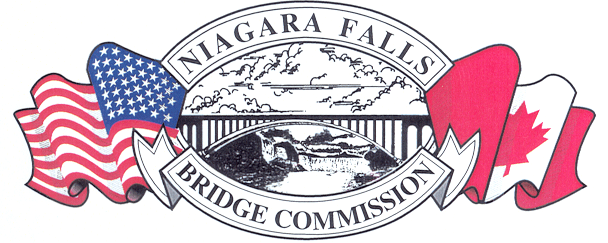Construction Activity Set to Commence at Rainbow Bridge

Construction Activity Set to Commence at Rainbow Bridge
Span will be reduced to two lanes between September 5th and November 2nd
LEWISTON, NY – Today the Niagara Falls Bridge Commission (NFBC) announced that it plans to begin maintenance and improvement efforts at the Rainbow Bridge early next month. The bridge crossing directly connects the popular tourist destinations of Niagara Falls, Ontario, and Niagara Falls, New York.
Construction activity will require the closure of two of the bridge’s traffic lanes, effectively reducing the standard four lanes down to two. This closure will take place between September 5th and November 2nd, 2018. Toll lanes and related Customs inspection booths will not be affected and will remain open 24 hours per day to cars and pedestrians during the construction. Bus and motor coach vehicles are strongly encouraged to schedule their crossings at the Rainbow Bridge via Border Planner, or use the Lewiston-Queenston Bridge or Peace Bridge as an alternative route.
“The Commission takes great pride in the care and maintenance of our bridges, and we’re excited for this next round of upgrades to the Rainbow Bridge, which is an international gateway that’s popular for both trade, tourism and views of iconic Niagara Falls,” said Kenneth Bieger, general manager of the NFBC. “We’re working closely with Customs agencies on both sides of the border as well as our many transportation partners, to stay coordinated during this construction period, in order to ensure that impacts on traffic flow are minimal. This construction work is being undertaken to keep the crossing structurally sound, modern, and efficient for its many users.”
The Commission successfully reduced the Rainbow Bridge traffic lanes in a comparable fashion during the 2009-2010 timeframe to complete similar structural improvements. The upgrades being completed during the 2018 fall season follow a number of recent improvements made to the Rainbow Bridge in order to more efficiently accommodate the passage of goods and travelers between Canada and the U.S.
In 2017, the Rainbow Bridge was outfitted with new LED overhead signage at both the tollbooths and Canada Customs primary inspection lanes to assist the public with plaza navigation and general wayfinding. Automated Border Wait Time technology was also installed, to provide wait time updates every five minutes for motorists, replacing a manual process that previously updated motorists only once an hour. In 2015, the NFBC also unveiled a $4.5 million to the Rainbow Bridge bus processing facility.
Only 1,000 feet downriver from the American Falls, the Rainbow Bridge opened in 1941. The bridge is positioned 202 feet above the Niagara River and stretches 1,450 feet between Canada and the U.S., and serves as a catalyst for tens of millions of dollars in economic activity as a result of tourism.
About the Niagara Falls Bridge Commission:
The Niagara Falls Bridge Commission is a unique, bi-national body. Canada and the U.S. are equally represented on the NFBC through the bi-national appointment of an eight-member Board of Commissioners. A Joint Resolution of the 1938 U.S. Congressional Third Session created the framework for the NFBC. In 1939, the Province of Ontario, Canada licensed the NFBC under The Extra Provincial Corporations Act and amended the Highway Improvement Act to authorize the appropriation of land in Ontario for transfer to the NFBC. Initially established to finance, construct and operate the Rainbow Bridge, the Commission proved efficient and effective at its mission. The NFBC’s powers and authority were thereafter expanded through amendments to the Joint Resolution in the U.S., and by the Rainbow Bridge Amendment Act of 1959 and the Queenston Bridge Act of 1959 in Canada. Together, these enactments empowered the NFBC to assume responsibilities for the Whirlpool Rapids (Lower) and Lewiston-Queenston Bridges. Today, in addition to owning and operating three international bridges, the NFBC builds and maintains facilities for Customs and Immigration functions on both sides of the international border. The NFBC is self-supportive, largely through user fees (tolls) and private-sector tenant leases. NFBC is authorized to conduct international commercial financial transactions and empowered to issue tax-exempt bonds in the United States.